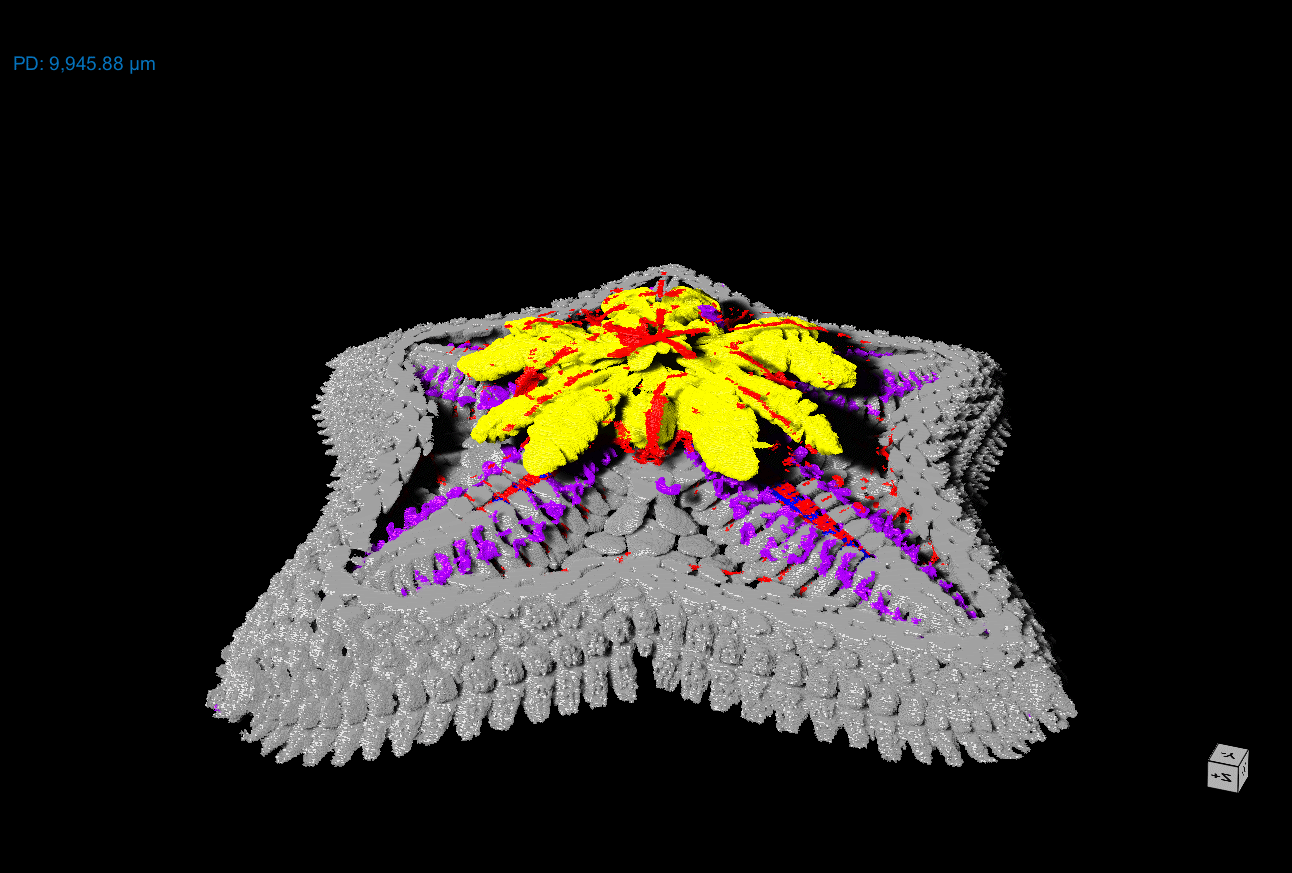When looking at a fish, it’s very clear which end is the head and which is the tail. But with the sea star, also known as the starfish, this isn’t the case. Its five identical arms have puzzled scientists for centuries. Plenty of biologists have tried to understand what constitutes the head of the starfish and now, for the first time, they may have figured out the most likely answer.

An international team of researchers used genetic and molecular tools to map out the body of starfish, creating a 3D atlas of their gene expression. They found that the “head” of a starfish isn’t in any one place. Instead, the headlike regions are distributed, with some in the center of the sea star as well as in the center of each limb of its body.
Starfish, along with sea urchins and sand dollars, belong to a group of animals called echinoderms. They have a unique fivefold symmetric body plan, which means that their body parts are arranged in five equal sections. This is different from their bilateral ancestors, which have a left- and right-hand side, as seen in humans and many other animals.
“The answer is much more complicated than we expected,” Laurent Formery, the lead author of the new study and a postdoc researcher in the laboratories of Stanford University and the University of California, said in a news release. “It is just weird, and most likely the evolution of the group was even more complicated than this.”
Mapping stars
In the study, the researchers compared the molecular markers of a sea star to other deuterostomes — a wider animal group that includes echinoderms and bilateral animals, like vertebrates. As they share a common ancestor, the researchers can compare their development and learn more about how echinoderms evolved their unique body plan.
They used a mix of high-tech molecular and genomic techniques to understand where different genes were expressed during the development and growth of sea stars. This included RNA tomography to pinpoint where genes are expressed in tissue and in situ hybridization, a technique that zeroes in on a specific RNA sequence in a cell.
With these, they created a 3D map of gene expression in the sea star to identify where specific genes are being expressed during the development phase. Specifically, they mapped the expression of genes that control the development of the ectoderm. This is known to mark the front-to-back patterning in the bodies of other deuterostomes.
They found this patterning was linked with the midline-to-lateral axis of sea star arms, with the midline of the arm representing the front and the outermost lateral parts being more like the back. Additionally, in deuterostomes, there’s a set of genes expressed in the ectoderm of the trunk, which is the “central body” (as opposed to the “head”). But in starfish, many of these trunk genes aren’t expressed in the ectoderm.
“When we compared the expression of genes in a starfish to other groups of animals, like vertebrates, it appeared that a crucial part of the body plan was missing. The genes that are typically involved in the patterning of the trunk of the animal weren’t expressed in the ectoderm,” Jeff Thompson, study author, said in a news release.
This then suggests that sea stars and other echinoderms could have evolved their five-section body plan by losing the trunk region of their bilateral ancestors — so starfish are “mostly head-like animals”. This would have allowed the echinoderms to move and feed differently than bilaterally symmetrical animals, suggesting their evolution was much more complex than expected.
The study was published in the journal Nature.









